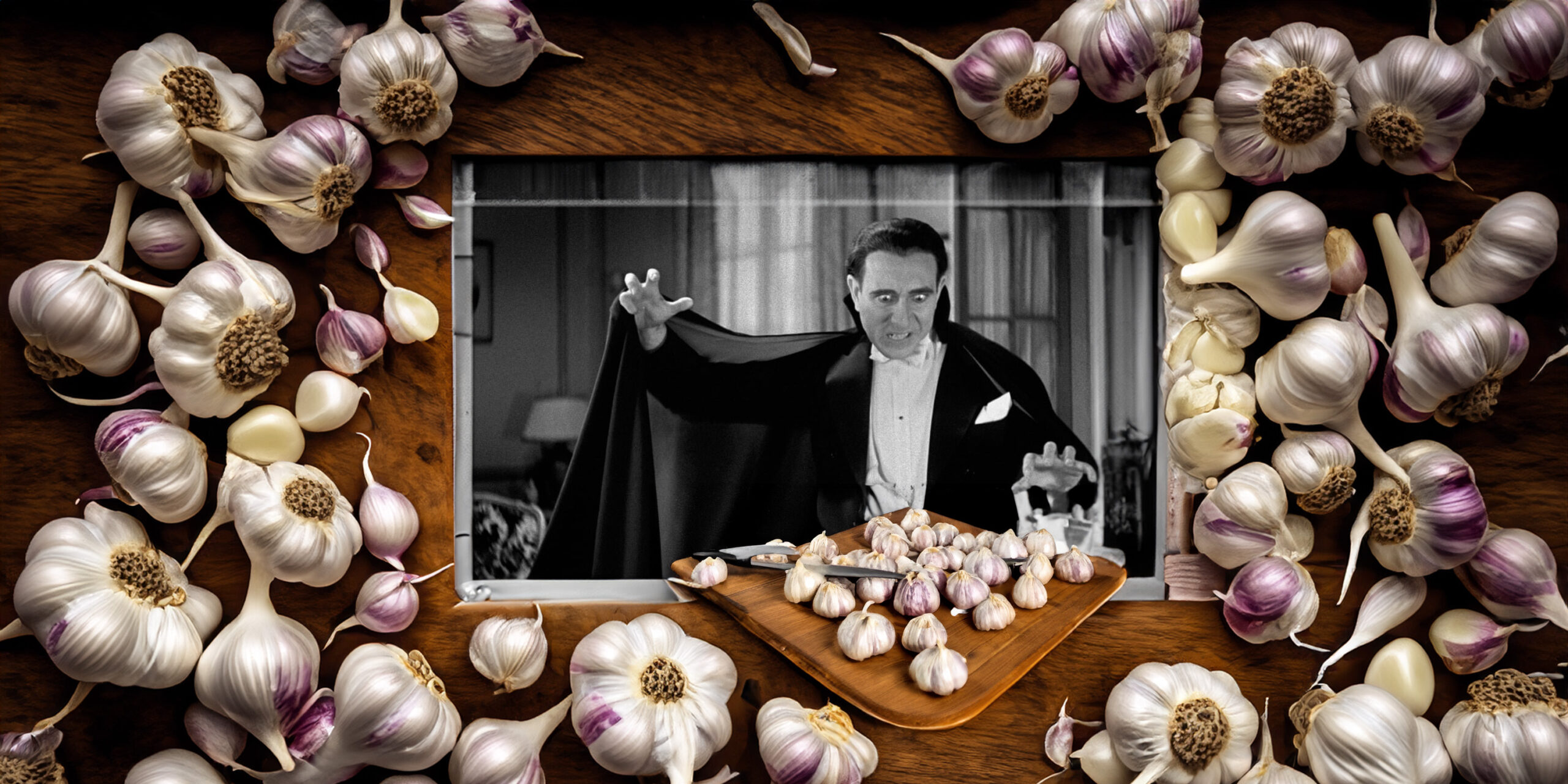History of garlic
 Garlic, scientifically known as Allium sativum, is a universally celebrated spice that has made its mark in almost every culture’s culinary practices. Its history is as rich and layered as its flavor, tracing back thousands of years and spanning across continents.
Garlic, scientifically known as Allium sativum, is a universally celebrated spice that has made its mark in almost every culture’s culinary practices. Its history is as rich and layered as its flavor, tracing back thousands of years and spanning across continents.
Origin and Early Use
Garlic’s journey began in Central Asia and northeastern Iran. It quickly became a staple in the ancient civilizations of Egypt, Greece, Rome, and China. In ancient Egypt, garlic was not only a daily food source but also a unit of currency and an offering to gods. It was believed to impart strength and endurance, hence it was commonly given to laborers and warriors.
In ancient Greece and Rome, garlic was both revered and reviled – appreciated for its medicinal properties but also shunned by the upper class for its pungent aroma. Hippocrates, the father of Western medicine, prescribed garlic for a range of conditions from respiratory issues to fatigue.
Cultural Spread and Adaptation
As trade routes expanded, garlic’s popularity spread across Europe and Asia. It was a food of the people – affordable, accessible, and packed with flavor. In medieval and Renaissance Europe, garlic was a common ingredient, though often shunned by the aristocracy. In Asia, it became integral to the culinary fabric of many countries, including China, Korea, and India.
Garlic in Modern Cuisine
Today, garlic is ubiquitous in global cuisines. Its versatility allows it to be a key ingredient in a vast array of dishes – from the robust garlic bread of Italy to the subtly spiced curries of India, the garlicky kimchi of Korea, and the pungent stir-fries of China. Its ability to enhance savory flavors has earned it a permanent spot in the pantries of home cooks and professional chefs alike.
Evolution into Supplements and Health Products
Beyond the kitchen, garlic has evolved into a health supplement. Recognized for its potential medicinal properties, including its ability to boost immunity and heart health, garlic is now available in various forms such as pills, extracts, oils, and powders. These supplements aim to deliver the benefits of garlic without the associated strong smell or taste.
Garlic’s Lasting Impact
Garlic’s journey from ancient crop to global kitchen staple and health supplement is a testament to its enduring appeal. Its pungent flavor and aroma, once a point of contention, are now celebrated worldwide. Garlic stands as a symbol of culinary universality, seamlessly integrating into diverse food cultures while maintaining its unique identity. Its evolution into supplements further cements its status as a versatile and timeless ingredient, valued not just for its flavor but also for its potential health benefits.
Flavour
Garlic, known scientifically as Allium sativum, has a distinctive and versatile flavour profile that makes it a cherished ingredient in cuisines worldwide. Its taste can vary from sharply pungent to mellow and sweet, depending on how it’s prepared.
Flavour Profile of Garlic
- Raw Garlic: When fresh and raw, garlic has a sharp, biting taste. It’s pungent and intense, with a hint of heat.
- Cooked Garlic: Cooking garlic mellows its pungency. It becomes softer in both texture and flavor, often described as nutty, earthy, and slightly sweet, especially when roasted.
- Aged or Fermented Garlic (see below): Black garlic, which is fermented, offers a complex flavour profile with sweet, syrupy, and tangy notes, reminiscent of balsamic vinegar or tamarind.
 Main Composition
Main Composition
Garlic’s flavour primarily comes from its sulfur-containing compounds, which are released when a garlic clove is chopped, crushed, or chewed. The most significant of these compounds is allicin, which is responsible for garlic’s strong aroma and taste. Allicin has also been studied for its potential health benefits, including antimicrobial and antioxidant properties.
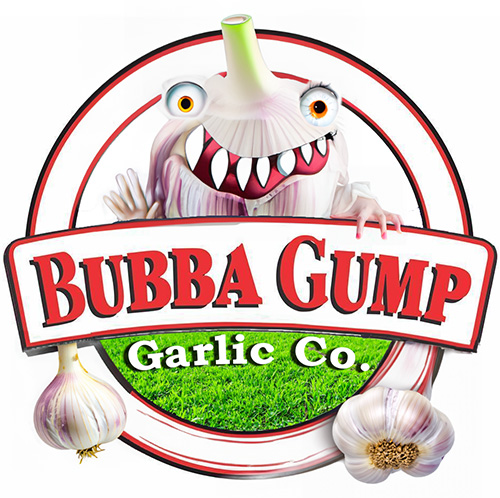 Types and Qualities of Garlic
Types and Qualities of Garlic
Garlic comes in several varieties, each with its unique characteristics:
- Softneck Garlic (Allium sativum var. sativum):
- Common in Supermarkets: This type is most commonly found in grocery stores.
- Varieties: Includes ‘Artichoke’ and ‘Silverskin’ garlic.
- Characteristics: They have a milder flavor and are known for their long shelf life. Softneck garlic is typically what’s used for making garlic braids.
- Hardneck Garlic (Allium sativum var. ophioscorodon):
- Popular with Chefs: Favored for its robust flavor.
- Varieties: Includes ‘Rocambole’, ‘Porcelain’, and ‘Purple Stripe’ garlic.
- Characteristics: Hardneck garlic has a more complex flavor profile than softneck varieties and is often spicier and more colorful. It’s known for its stiff central stalk and fewer but larger cloves.
- Black Garlic:
- Fermented Garlic: Created by aging regular garlic under controlled high heat and humidity.
- Characteristics: Black garlic has a soft, chewy texture and a sweet, umami-rich flavor. It lacks the sharp bite of raw garlic.
- Elephant Garlic (Allium ampeloprasum):
- Milder Flavor: Despite its larger size, it’s milder in flavor compared to true garlic.
- Use: Often used in dishes where a gentler garlic flavor is desired.
- Organic Garlic:
- Cultivation: Grown without synthetic pesticides or fertilizers.
- Characteristics: Some people prefer the taste of organic garlic, believing it to be more ‘natural’ in flavor.
- Wild Garlic (Allium ursinum):
- Foraging: Often foraged in the wild and used in culinary dishes.
- Flavor: Milder than common garlic, with a slightly grassy undertone.
- Green Garlic:
- Young Garlic: Harvested before the cloves have fully formed.
- Flavor: Milder and less pungent than mature garlic.
Each type of garlic brings a unique element to culinary applications, allowing chefs and home cooks to select a variety based on the desired flavor intensity and dish requirements.
Black (fermented) garlic
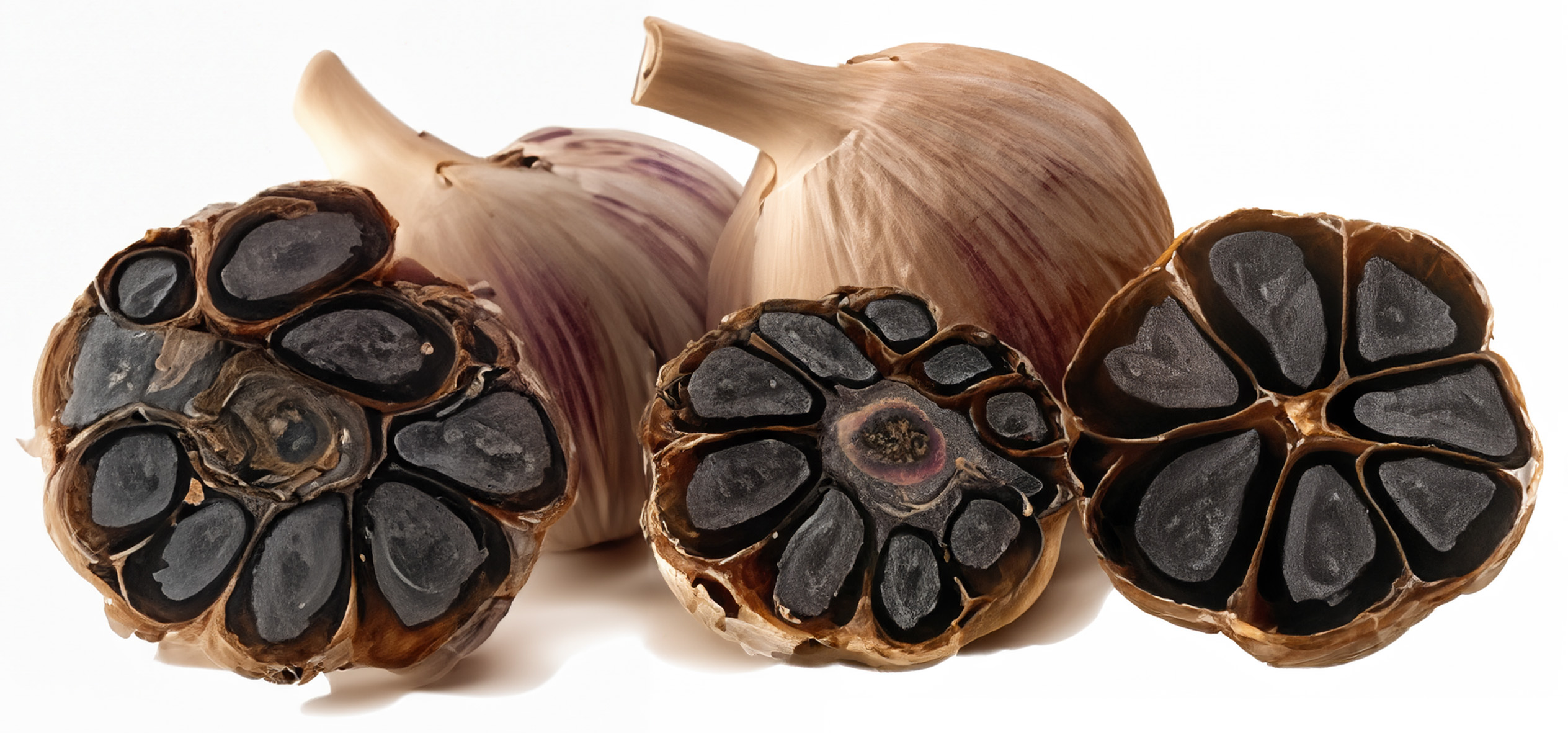
Fermented garlic, commonly known as black garlic, is a type of caramelized garlic first used in Asian cuisine. It’s made by slowly heating whole bulbs of garlic over several weeks, resulting in black cloves with a soft, chewy texture. The process of making black garlic is often referred to as “fermentation,” but it’s more accurately a slow, controlled Maillard reaction rather than a true microbial fermentation.
Taste and Texture
- Flavor Profile: Black garlic has a sweet, syrupy taste with hints of balsamic vinegar or tamarind, devoid of the sharpness of raw garlic. It also carries mild undertones of garlic’s inherent flavors but without the pungency.
- Texture: It becomes soft, chewy, and jelly-like, quite different from its original raw state.
Chemical Reactions
The transformation in black garlic is primarily due to the Maillard reaction, which is a chemical reaction between amino acids and reducing sugars that gives browned food its distinctive flavor. This reaction occurs under controlled humidity and temperature over several weeks. The key changes include:
- Caramelization of Sugars: Natural sugars in garlic caramelize, turning the cloves a dark color and creating a sweet flavor.
- Breakdown of Allicin: Allicin, which gives raw garlic its sharpness, breaks down, resulting in a milder taste.
- Development of New Compounds: New flavor compounds are created during this process, contributing to the unique taste of black garlic. These include various types of Maillard reaction products that are not present in fresh garlic.
Culinary Uses
Black garlic is used in a variety of culinary applications:
- Sauces and Dressings: Its sweetness and complexity make it an excellent ingredient for sauces and dressings.
- Meat Marinades: It can add depth to meat dishes.
- Spreads: Can be used as a spread on bread or crackers.
- Health Foods: Valued in health food circles for its potential antioxidant properties.
Nutritional Aspect
While black garlic loses some of its allicin content during the heating process, it retains many of garlic’s nutrients and is rich in antioxidants. The aging process appears to increase its concentration of certain compounds like S-allylcysteine, which is water-soluble and thus more easily absorbed by the body.
In summary, black garlic is a unique, sweet, and complex version of garlic, created through a process resembling fermentation but technically driven by the Maillard reaction. Its versatility in the culinary world and potential health benefits make it a popular ingredient in various cuisines.
Combining fruit flavours with garlic
 Combining garlic with fruit might seem unusual, but there are indeed some fruits whose flavours can complement garlic well. Here are a few examples:
Combining garlic with fruit might seem unusual, but there are indeed some fruits whose flavours can complement garlic well. Here are a few examples:
- Lemons: The acidity and freshness of lemon can balance the pungency of garlic, especially in Mediterranean dishes.
- Tomatoes: Technically a fruit, tomatoes pair beautifully with garlic in a wide range of cuisines, creating a rich, savory flavour profile.
- Pineapples: In some dishes, especially in Asian cuisine, the sweetness of pineapple can contrast nicely with the strong flavour of garlic.
- Apples: Particularly in roasted or sautéed dishes, apples can offer a sweet counterpoint to garlic’s robust flavour.
- Oranges: The citrusy sweetness of oranges can complement garlic in marinades and sauces.
- Mangoes: In salsas and chutneys, mangoes’ sweetness and tartness can balance the intensity of garlic.
- Figs: Figs can be an interesting pair with garlic in certain sophisticated dishes, balancing sweetness with the savory depth of garlic.
- Pomegranate: The tangy sweetness of pomegranate can work well with garlic in Middle Eastern recipes.
- Peaches: Especially in grilled or roasted dishes, the sweetness of peaches can complement the robust flavour of garlic.
- Apricots: Their subtle sweetness and slight tartness can pair nicely with garlic, especially in Middle Eastern cuisines.
- Cherries: In sauces or glazes, cherries can offer a sweet and tart balance to the pungent flavour of garlic.
- Plums: Their juicy and slightly tangy flavor can work well in savory dishes with garlic.
- Lime: Similar to lemons, limes bring a zesty, acidic balance to garlic-heavy dishes, particularly in Latin American and Southeast Asian cuisines.
- Grapes: In certain sauces and roasts, the sweetness of grapes can offset the strong flavour of garlic.
- Berries: Strawberries, raspberries, and blackberries can be used in sauces or salsas with garlic, providing a unique sweet and savory combination.
In each case, the key to success lies in balancing flavours to ensure that neither the garlic nor the fruit overwhelms the other.
Tips on manipulating garlic & its flavour
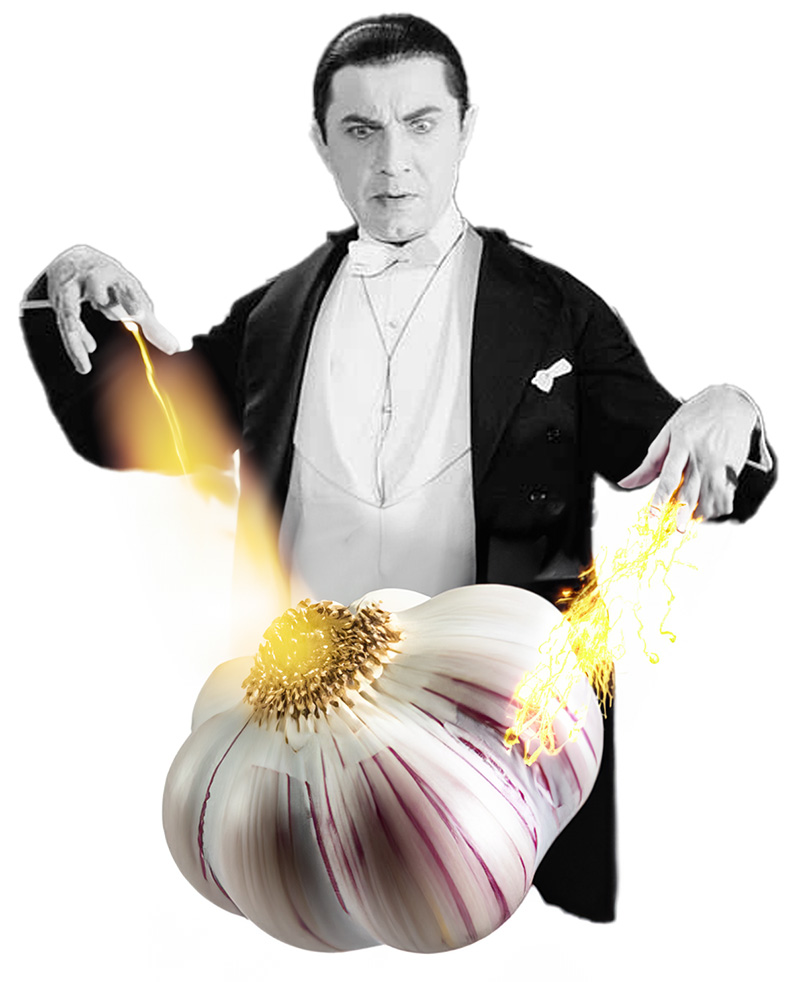 Garlic is a versatile and flavourful ingredient that can be manipulated in various ways to achieve different flavours and textures. Here are some interesting tricks and techniques for manipulating garlic:
Garlic is a versatile and flavourful ingredient that can be manipulated in various ways to achieve different flavours and textures. Here are some interesting tricks and techniques for manipulating garlic:
- Electrifying: Will provide supernatural flavour undertones.
- Roasting: Roasting garlic whole in the oven softens and sweetens its flavour. This mellows the pungent bite of raw garlic, yielding a creamy, spreadable texture.
- Microwaving: You can quickly soften garlic cloves by microwaving them for about 15-20 seconds. This makes them easier to peel and mash.
- Slicing vs. Crushing: Sliced garlic imparts a milder flavour compared to crushed or minced garlic, which releases more of the garlic’s oils and results in a more intense flavour.
- Toasting in Oil: Lightly toasting garlic slices in oil over low heat infuses the oil with a delicious garlic flavour, perfect for cooking or as a dressing.
- Grating: Grating garlic on a microplane creates a garlic paste that blends smoothly into sauces, dressings, and marinades.
- Green Shoot Removal: If your garlic has a green shoot in the center (the “germ”), removing it can reduce bitterness, especially in older garlic.
- Blanching: Quickly blanching garlic cloves in boiling water can soften their flavour, making them less pungent for raw applications like salads.
- Pickling: Garlic can be pickled for a tangy, less intense flavour. Pickled garlic is great as a snack, in salads, or as part of a charcuterie board.
- Infusing in Liquids: Infusing milk, cream, or broth with whole or crushed garlic adds a subtle garlic flavour to the liquid, which can be used in soups, sauces, and mashed potatoes.
- Fermenting into Black Garlic: Fermenting garlic at low temperatures over several weeks transforms it into black garlic, which has a sweet, umami-rich flavour.
- Crushing with Salt: Crushing garlic with a pinch of coarse salt with the flat side of a knife can help break down the cloves and mellow the flavour.
- Sautéing with Care: Garlic burns easily, which can turn it bitter. Sautéing it briefly over low heat until just golden ensures the best flavour.
- Using a Garlic Press: A garlic press can save time and effort, especially when you need finely minced garlic.
- Freezing: You can freeze garlic cloves whole, minced, or as a paste. This method preserves its flavour and makes it convenient to use in cooking.
- Making Garlic Chips: Thinly sliced garlic can be fried until crisp and used as a flavourful garnish.
- Confiting: Garlic confit involves slow-cooking garlic cloves in oil until tender and sweet. The infused oil is also a flavourful byproduct.
- Dry Roasting: Dry roasting garlic cloves in their skins in a pan makes them easy to peel and imparts a smoky flavour.
- Using Different Varieties: Different varieties of garlic (like elephant garlic, purple garlic, etc.) have varying levels of intensity and sweetness.
These tricks highlight the versatility of garlic and how different preparations can result in a wide range of flavours and uses in cooking.
Unconventional uses for garlic
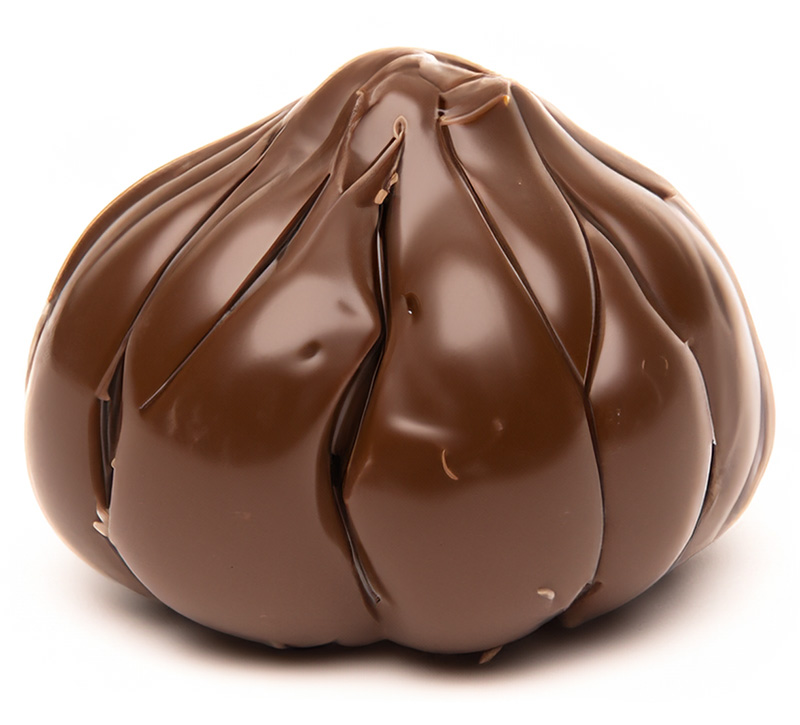 Using garlic in candies and beverages is unconventional, but it’s not impossible. Garlic’s pungent and savory flavor profile presents a unique challenge in traditionally sweet or refreshing contexts like candies and beverages. However, with creative culinary approaches, garlic can be incorporated in these items, especially when aiming for novelty, health benefits, or unique gastronomic experiences. Here are a few possibilities:
Using garlic in candies and beverages is unconventional, but it’s not impossible. Garlic’s pungent and savory flavor profile presents a unique challenge in traditionally sweet or refreshing contexts like candies and beverages. However, with creative culinary approaches, garlic can be incorporated in these items, especially when aiming for novelty, health benefits, or unique gastronomic experiences. Here are a few possibilities:
Garlic in Candies:
- Garlic-Infused Chocolate: Incorporating a subtle hint of garlic into dark chocolate can create a unique gourmet experience, pairing the bitterness of dark chocolate with the savory notes of garlic.
- Honey-Garlic Candies: Honey can soften the sharpness of garlic, making a throat-soothing lozenge popular in natural health remedies.
- Garlic Caramel: A savory twist on a sweet classic, balancing garlic’s intensity with the richness of caramel.
Garlic in Beverages:
- Garlic Tea: Often used for its medicinal properties, garlic tea can be made more palatable with the addition of honey and lemon.
- Garlic-Infused Cocktails: In craft mixology, garlic can be used to add a savory note to certain cocktails, often in the form of a garlic-infused spirit or a subtle garnish.
- Savory Smoothies or Juices: Garlic can be part of a savory vegetable juice or smoothie, combined with ingredients like tomatoes, celery, and carrots.
Considerations:
- Balance is Key: The strong flavor of garlic needs to be carefully balanced so as not to overpower the other flavors in the candy or beverage.
- Target Audience: These products would likely appeal to a niche market interested in unique and adventurous flavor experiences.
- Health Focus: Garlic is known for its health benefits, so positioning these products in the health or wellness market might be effective.
While not mainstream, garlic-infused candies and beverages could offer an intriguing option for those seeking unconventional and bold flavors.
Unconventional garlic-flavoured products
 Garlic, known for its strong flavor and aroma, is commonly used in savory dishes, but it has also found its way into some unusual food and beverage items. Here’s a list of some unconventional garlic-flavored products:
Garlic, known for its strong flavor and aroma, is commonly used in savory dishes, but it has also found its way into some unusual food and beverage items. Here’s a list of some unconventional garlic-flavored products:
- Garlic Ice Cream: A surprisingly popular choice at garlic festivals, this ice cream incorporates garlic for a unique savory-sweet experience.
- Garlic Beer: Craft brewers have experimented with garlic as an ingredient, creating a unique, pungent brew.
- Garlic Chocolate: Combining the intensity of garlic with the richness of chocolate, this is a niche gourmet product.
- Garlic Coffee: In some places, garlic is roasted and used as a coffee substitute, offering a strong, savory alternative to traditional coffee.
- Garlic Jam: Used as a spread, this unusual jam combines the pungency of garlic with the sweetness of traditional jam ingredients.
- Garlic Soda: A soft drink with a garlic flavor, appealing to those who enjoy adventurous and unconventional tastes.
- Garlic toothpaste: Slaying bad breath, not the undead.
- Garlic Bread Spread Ice Cream: Turning the beloved garlic bread spread into an ice cream flavor for an unusual savory dessert.
- Garlic Honey: Infused with garlic, this honey is used as a savory twist in various dishes or as a natural remedy.
- Garlic-Flavored Yogurt: In some cuisines, garlic is mixed into yogurt to create a savory and tangy side dish.
- Garlic Lollipops: A novelty candy item that infuses the strong taste of garlic into a sweet lollipop.
- Garlic-Flavored Teas: Herbal teas that include garlic, often touted for their health benefits.
These items reflect the versatility of garlic and its ability to provide a unique flavor profile even in unexpected places. While not to everyone’s taste, they certainly offer a distinctive culinary experience.
Garlic-inspired perfumes
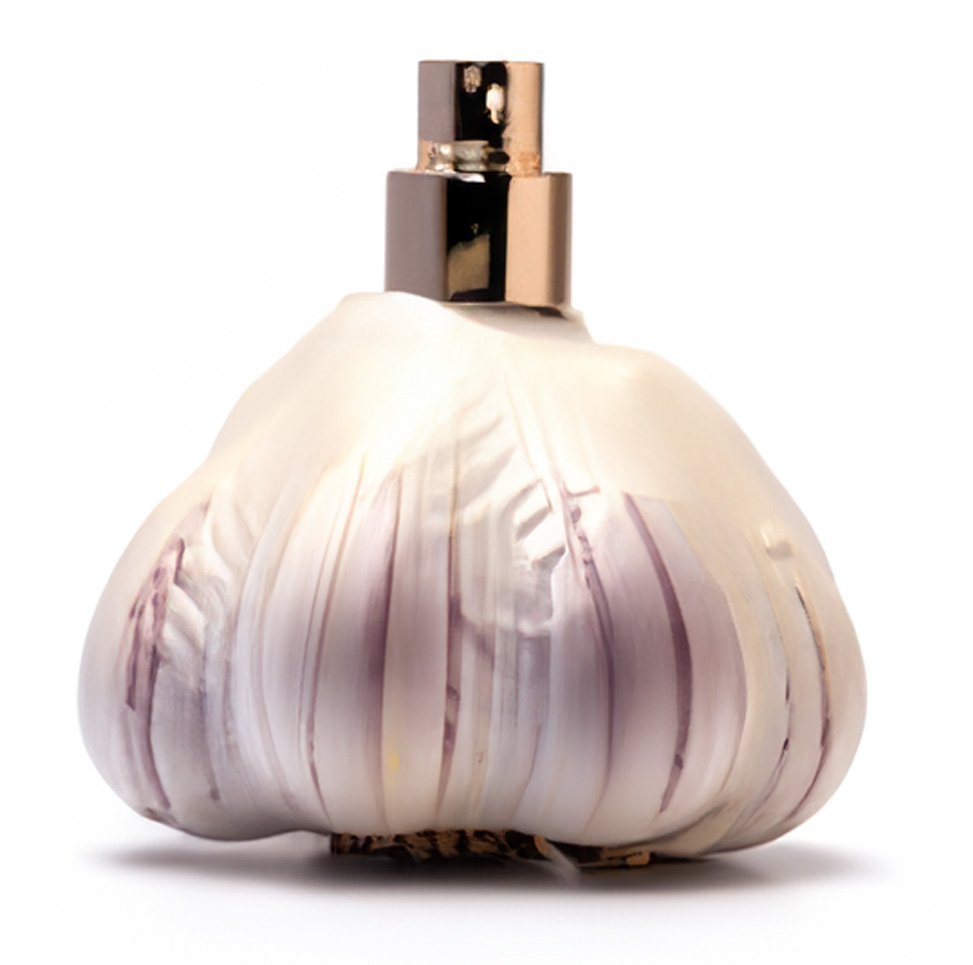 Garlic-inspired perfumes do exist, although they are quite niche and unusual. These perfumes are typically created by artisan or avant-garde perfumers who are interested in pushing the boundaries of traditional fragrance design. The concept behind such perfumes is often to capture the essence of garlic’s distinctive aroma and to blend it with other notes to create a unique, if not polarizing, olfactory experience.
Garlic-inspired perfumes do exist, although they are quite niche and unusual. These perfumes are typically created by artisan or avant-garde perfumers who are interested in pushing the boundaries of traditional fragrance design. The concept behind such perfumes is often to capture the essence of garlic’s distinctive aroma and to blend it with other notes to create a unique, if not polarizing, olfactory experience.
Characteristics of Garlic-Inspired Perfumes:
- Unique Scent Profile: These perfumes might aim to replicate the pungent, savory, and spicy notes of garlic.
- Artistic Expression: Often created as a form of artistic expression rather than for mainstream appeal.
- Combination with Other Notes: Garlic notes are typically combined with other, more traditional perfume notes to create a balanced and wearable scent.
- Niche Appeal: Such fragrances are usually targeted towards a niche market of perfume enthusiasts looking for unconventional scents.
Use and Availability:
- Limited Availability: These perfumes are not commonly found in mainstream perfume stores. They are more likely to be sold by specialty or boutique fragrance houses.
- Artisanal Creations: Independent and artisanal perfumers are more inclined to experiment with unusual notes like garlic.
- Online Platforms: They may be available through online platforms that specialize in unique or custom fragrances.
Considerations:
- Novelty Factor: Often, these perfumes are created for their novelty factor or to challenge conventional notions of what makes a fragrance appealing.
- Not Widely Worn: Due to their unconventional nature, garlic-inspired perfumes are not typically worn for everyday purposes but might be appreciated by fragrance collectors and enthusiasts.
While garlic-inspired perfumes do exist, they are quite rare and cater to a very specific segment of the fragrance market. These perfumes are more about artistic exploration and challenging olfactory norms than about mainstream fragrance preferences.
While garlic-inspired perfumes are extremely niche and rare, there are a few examples where garlic or garlic-like notes have been incorporated into fragrances. These examples are often from experimental or avant-garde perfumers who are interested in exploring unconventional scents:
- Demeter Fragrance Library – “Garlic”: Demeter is known for creating a wide range of unique and realistic scents. They have a fragrance called “Garlic” that captures the essence of this pungent aroma. It’s part of their more experimental collection and is used more as a novelty scent rather than a traditional perfume.
- Etat Libre d’Orange – “Sécrétions Magnifiques”: While not specifically garlic, this controversial and avant-garde perfume is known for its combination of unusual aroma chemicals that create a bodily-fluids-like scent, which some people associate with the pungency of garlic.
- Garlic Perfume by Gorilla Perfume: This was a limited edition scent created for a Garlic Farm. It’s a rare example and was more of an artistic statement rather than a widely available product.
- Bompas & Parr – “Eau de Garlic”: This was created as part of an installation and was an attempt to make garlic an appealing scent in a fragrance.
These perfumes are more about artistry and pushing the boundaries of traditional perfumery than about creating widely appealing scents. They are often sought after by collectors and those with a keen interest in unique, unconventional fragrances. Availability can be limited, and they may not be easily found in mainstream stores.


